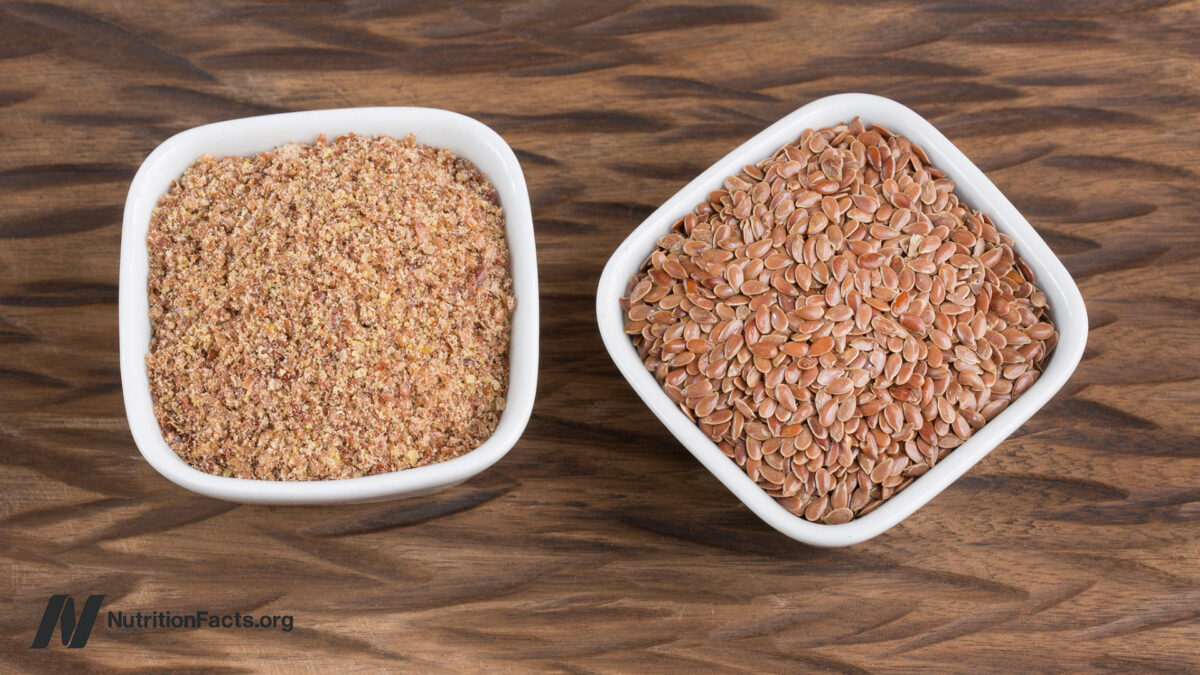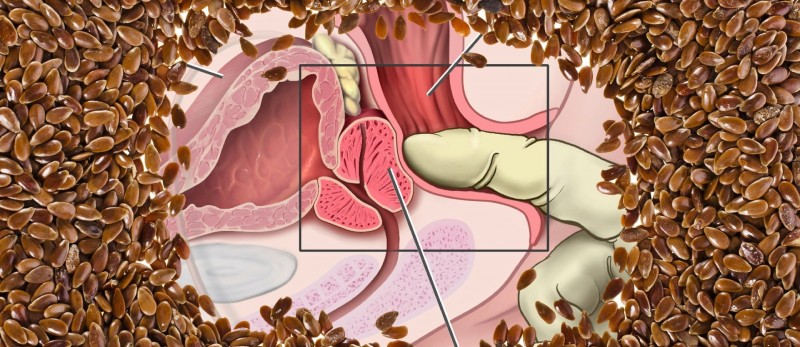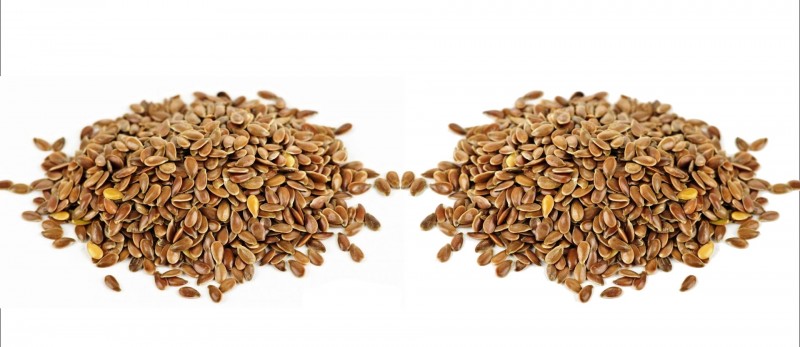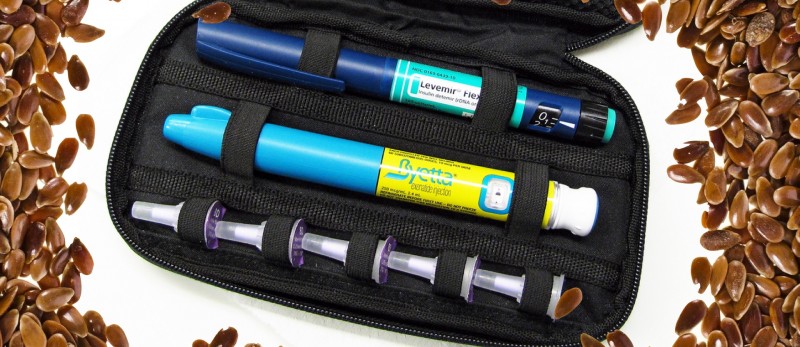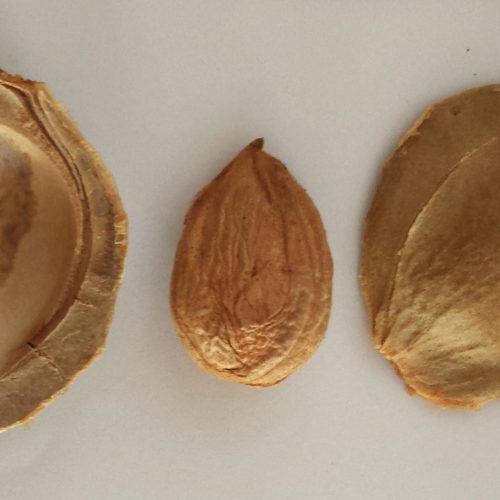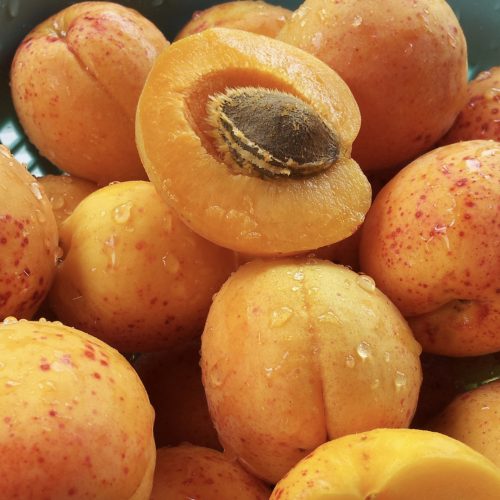My Daily Dozen recommends at least one tablespoon of ground flaxseeds a day, but what’s this about cyanide?
Sweden’s dietary guidelines are pioneering in many ways. For example, they encourage people to decrease their climate impact by choosing more plant-based foods, which tend to produce far fewer greenhouse gas emissions, which “is why it’s important for us to cut back on meat…” I was surprised by a page on the official Swedish National Food Agency website, though, which discusses cyanogenic glycosides and hydrogen cyanide and recommends for people to “refrain[] from eating” ground flaxseed for fear of cyanide toxicity—as in the ground flaxseeds I encourage everyone to eat every day. No surprise that this was the first question I was asked when I gave a presentation in Stockholm!
Was the Swedish government onto something? Had I been duped by Big Flax-funded researchers who claimed you could eat pounds—more than 150 tablespoons—of ground flaxseeds every day without worrying? First, some background.
As I discuss in my video Friday Favorites: How Well Does Cooking Destroy the Cyanide in Flaxseeds?, as many as one in five plants that we eat produces cyanide. In fact, if you look at the major food crops in the world (shown in the table below and at 1:07 in my video), more than half are “cyanogenic,” meaning cyanide-producing. But, unlike toxic elements like lead, mercury, or arsenic that can’t be broken down into anything, cyanide is an organic molecule—one carbon atom attached to one nitrogen atom. In this organic state, it can definitely be toxic, but it loses its toxicity once it’s broken down or complexed to something else, and we have a cyanide-detoxifying enzyme in our body that does just that. That’s just one of five main ways our body can detoxify cyanide. It does require protein to do it, though, so that’s why there has been chronic cyanide toxicity among malnourished populations in Africa trying to live off of improperly processed cassava root, for example. But, as long as we’re getting adequate protein in our diet, our body can detoxify the normal amounts of cyanide we eat every day.
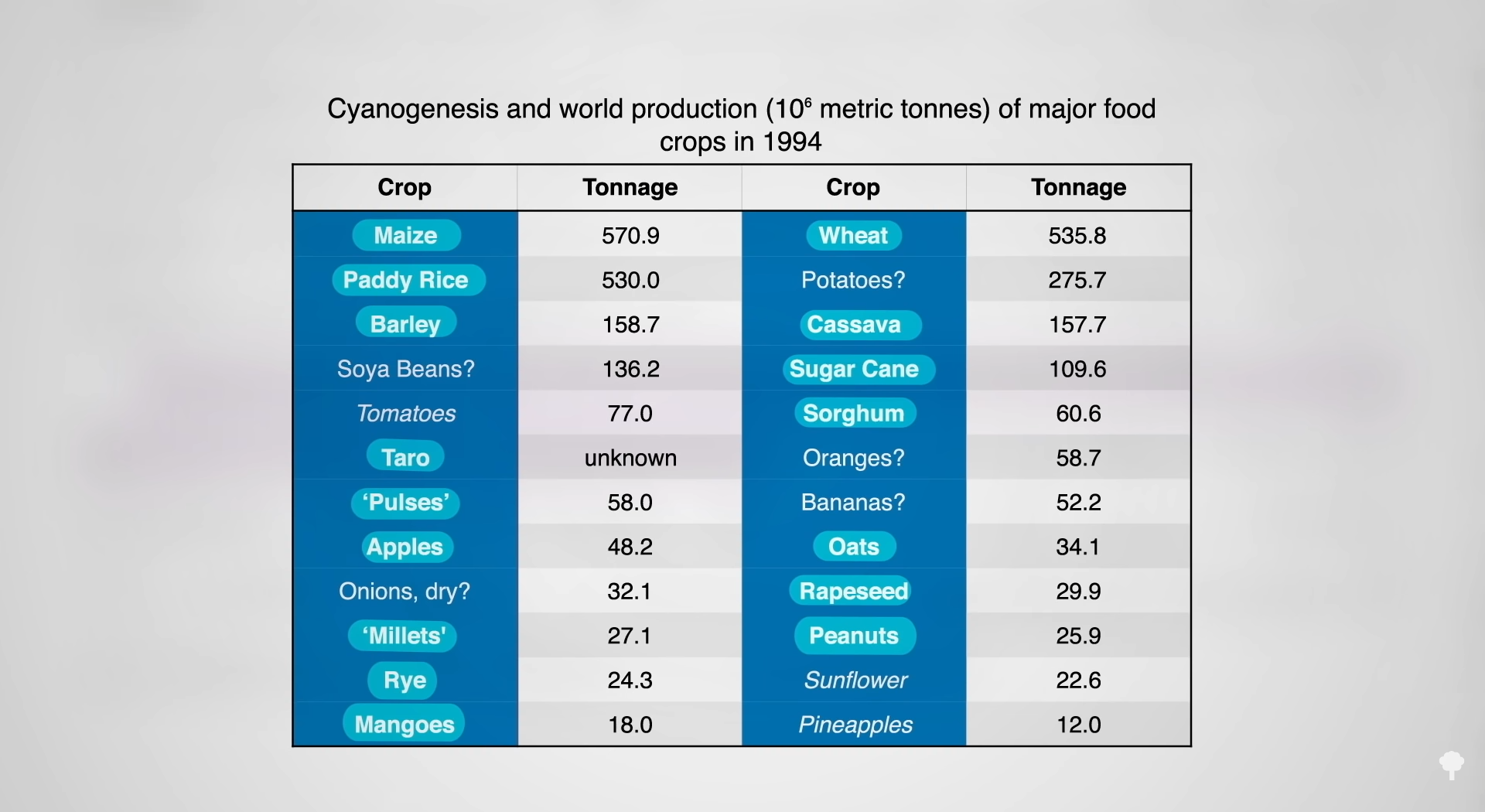
There is a rare, congenital genetic condition called Leber’s disease, though, where you’re born without the ability to detoxify cyanide. Theoretically, “people with the potential for Leber’s disease can go blind” from drinking apple cider, for instance, “because of the effects of cyanide in cider,” but other than that, our bodies evolved to be cyanide-detoxifying machines. Of course, there’s a limit. For example, there was a case of cyanide poisoning after ingestion of bitter almonds. Not regular almonds, which produce about 40 times less cyanide, but bitter almonds, which you can’t even buy. (They’re used in flavor manufacturing.) If you did manage to get some, eating 50 of them could kill you, or even just a handful for a small child. This suggests that eating 2,000 regular almonds at one sitting could also be bad news.
Although you can’t buy bitter almonds, you can buy apricots and apricot kernels, which are the seeds inside the stone. They actually have pretty toxic levels and have been implicated in cases of severe cyanide poisoning all linked to “Laetrile: the cult of cyanide, promoting poison for profit” scam that you may recall I talked about in my Do Apricot Seeds Work as an Alternative Cancer Cure? video, so I’m totally sympathetic to regulators wanting to take a precautionary approach. But, are flaxseeds like bitter almonds, where just a few ounces could kill you, or are they more like regular almonds, where regular dietary intake wouldn’t even come close?
Although the fact that flaxseeds can produce cyanide sounds like it would be a significant health concern, “it is not for several reasons,” according to scientists funded by the flax industry. First, an adult human has the ability to detoxify up to 100 mg of cyanide per day. That’s where the “pounds of flaxseeds a day are safe” number came from. And if you wanted to consume even more than those totally unrealistic 150 tablespoons a day, you could just eat them in baked goods since cooking destroys the cyanide. What’s more, eating seven or eight tablespoons of raw flaxseeds doesn’t even bump up the level of urinary thiocyanate, which is an indicator of cyanide exposure. So, it doesn’t even look like your body is exposed to it. “Thus, the toxicity of flaxseed from CGs [cyanogenic glycosides] is not a realistic health threat.”
Let’s unpack that. The cooking part is mostly true. Baking muffins with just a quarter cup or so of ground flax for 15 to 18 minutes at about 450 degrees Fahrenheit eliminates the cyanide-forming compounds. The same appears to happen with baked bread, but, if you bake ground flaxseeds on their own, only 20 percent of the compounds are wiped out in even an hour at 350 degrees. Baking them whole wipes out 80 percent, though, and baking them in bread or muffins eliminates 100 percent. How does that make any sense? It’s the moisture. Heat plus water wipes out the cyanide. It can be eliminated by boiling for just five minutes, when making hot cereal, for instance. So, yes, in most cases, it’s true that cooking eliminates the cyanide compounds in flax, because they are typically in a batter as an egg substitute or in a moist dough when baking crackers, for example. In those cases, the cyanide is gone upon cooking. But, you can’t just spread ground flaxseeds on a baking sheet because they dry out so fast that only a minority of the cyanide is lost. Why does it matter, though, if your body doesn’t even seem to notice seven or eight tablespoons of them when they’re raw? Because your body does notice. Urinary thiocyanate excretion doubled at that level, though that’s just a sign your body is actively detoxifying it. And if we can detoxify a kilo’s worth of flax a day, what’s the problem?
Even if the “adult human body has the ability to detoxify ≤100 mg cyanide/day,” kids eat flax, too. Furthermore, as you can see below and at 5:47 in my video, a kilo has about 50 percent more than the 100 mg we could detoxify and I’m not interested in how much we can detoxify “up to.” For safety, we should be interested in the worst-case scenario, not the best-case scenario. Would someone please just give study participants different doses of flaxseeds and measure how much cyanide ends up in their blood? They did, and I cover that study in my video Friday Favorites: Should We Be Concerned About the Cyanide in Flaxseeds?.
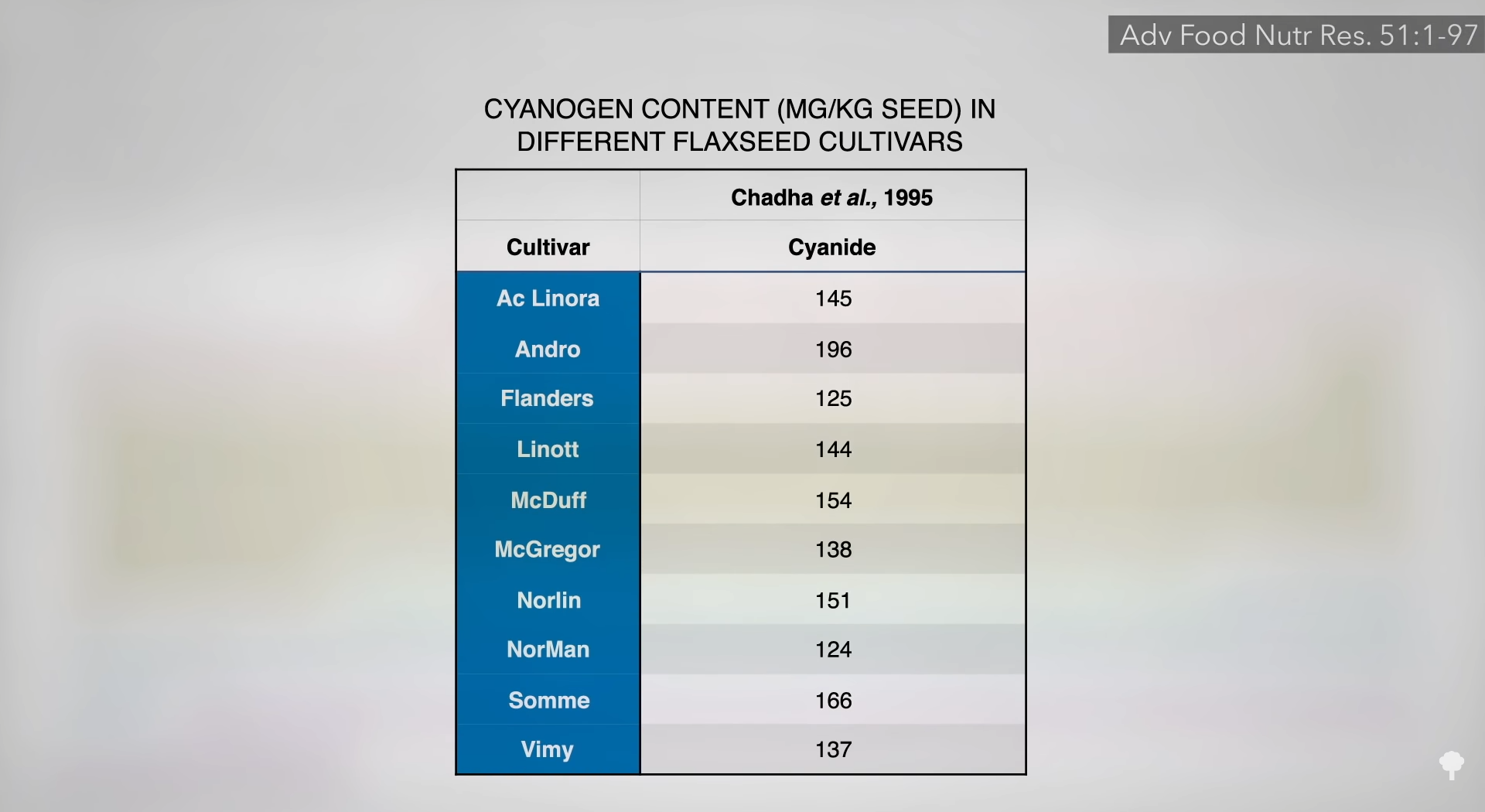
So, Friday Favorites: How Well Does Cooking Destroy the Cyanide in Flaxseeds and Should We Be Concerned About It? Watch the thrilling conclusion.
I mentioned my Daily Dozen Checklist, which includes my recommendation for at least one tablespoon of ground flaxseed a day. Check it out to learn more.
